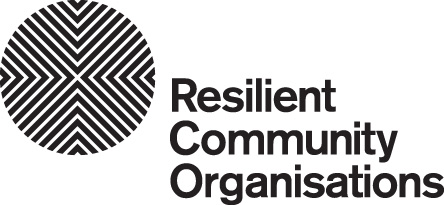Useful Terms: Hazards and Risks
In Step 1 we noted disasters and emergences can arise from events such floods, bush fires, heat waves, etc.
We also noted while the two terms, emergency and disaster, are often used interchangeably, they do have distinct meanings and that it’s up to all of us to stop emergencies from becoming disasters.
When researching and analysing past, present and future disasters and emergency risks it is important to understand that disasters and emergences can arise from floods, bush fires, heat waves, etc.
Floods, bush fires, heat waves, etc. are hazards - that is sources of potential harm.
That is, these events are not risks themselves, rather they are sources of risk (e.g. roads may be blocked and prevent people from evacuating). A risk arises when it's possible that a hazard will actually cause harm.
Chricton's Triangle represents risks as arising from the interaction between a hazard (such as a bushfire or flood), exposure to that hazard (or the likelihood of a bushfire or flood occurring in a particular community) and vulnerability (or the degree to which a community or person is likely to sustain harm due to a bushfire or flood).
In analysing your context and situation clear distinctions between these terms are very useful.
Research Questions
To prepare for and manage risks you need to know what risks you face. Some starting points for getting to know your risks are researching:
-
Disasters and emergencies that have occurred in your community/area in the past.
-
The impact of previous disasters and emergencies on your organisation and the clients you serve and the local community
-
Disasters and emergencies that may occur in the future that have not occurred in your community/area in the past.
Important questions to ask when you are researching past situations are:
-
What was the hazard – the source of potential harm?
-
What happened – that prevented the hazard from causing harm?
-
What harm happened? How could it have been prevented?
Important questions to ask when you are researching present and future situations are:
-
What are likely hazards – the source of potential harm?
-
What might happen – that prevents the hazard from causing harm?
-
What might happen that allows harm to be caused?
When thinking about what might happen in the future in particular, it will be important to research any changes to the type, frequency or intensity of hazrds that are projected to affect your community or region as a result of climate change.
'What If' Scenarios
Leading a discussion with your team about all the ‘what ifs’ can be helpful in identifying the consequences of particular risks. It is often easy to identify a risk but a little trickier to list all the different ways that risk may affect your organisation’s objectives.
A thorough understanding of the internal and external context your organisation operates in will help you to identify the risks from disasters and emergencies that are relevant to your organisation. In analysing your organisational context, consider the following:
-
Which of your services would be essential or non-essential during and immediately after an emergency?
-
Which of your services are dependent on other organisations or businesses? (For example, if you provide meals to clients, identify food suppliers here)
-
Which services do you provide that no other organisation provides in your community?
-
Which personnel are critical in the delivery of your essential services?
-
How would your clients or beneficiaries be impacted by your inability to deliver services?
-
What laws, rules, regulations or standards apply to your organisation?
-
What work is already being undertaken to manage risk?
You could prompt the discussion by presenting a scenario to the group such as what if our building was destroyed by flood? Some possible consequences may include:
-
Safety – the safety of your staff, volunteers and clients may be affected
-
Financial cost – could you afford to restore or rebuild physical infrastructure?
-
Service delivery failure – can you deliver services without your building, IT systems, goods?
-
Access – can you deliver services without key personnel who may be unable to reach your premises due to a hazard?
-
Reputational damage – what do your external stakeholders expect from you?
You will then need to rate the severity of the consequences you have identified and further explore issues that need to be addressed.
This kind of research is not easy. You may find some of the following ideas useful:
-
Conducting a brainstorming session with staff and volunteers
-
Inviting your local emergency service organisations to assess your premises
-
Reading your local emergency management plan which will have already identified hazards in your area
-
Speaking with your local council emergency management team
-
Visiting the CSIRO and Bureau of Meteorology websites which have up to date research and forecasts
-
Looking over your insurance claim history and chatting to your insurance company
-
Asking other community service organisations what hazards they have identified
-
Using our Community Sector Risk Register (see below).
You may also find the Introduction to Risk Management provided in the downloads section below useful.





